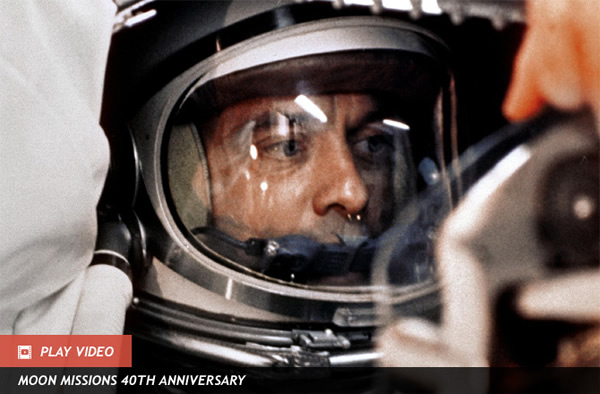Wrong Reality: If an American Was First in Space
Wrong Reality: If an American Was First in Space
There are key moments in spaceflight’s history that, in retrospect, defined the subsequent course of events. Take Yuri Gagarin’s orbital flight in 1961, for example.
When Gagarin became the first man in space, America responded with the manned lunar landing challenge, which led to the Apollo program. But what if Gagarin hadn’t been first? What if American astronaut Al Shepard became history’s first man in space? It’s an interesting question, one that conjures an alternate reality where we may not have gone to the moon at all.
The Space Age, and the Space Race, was in its infancy in 1959. And the two major players were more or less on par. Both the United States and the Soviet Union had launched satellites, were actively training astronauts and cosmonauts respectively, and neither was quite ready to launch a manned mission.
With little reason to suspect the pace of space exploration would soon go into overdrive, NASA was looking forward to a measured and deliberate plan to extend man’s reach into the cosmic ocean.
At the core of NASA’s prospective plan in space was gathering as much knowledge and experience about living and working in space. To this end, the agency hoped to develop and build new vehicles – both rockets and spacecraft – that could form the basis of a long term program to peacefully explore space. Of course, national prestige and preserving the United States’ role as a leader in space science and technology was also a priority, as was making the new technology available to the nation’s military for defense purposes. Understood in these widespread facets of spaceflight was the boon this endeavor would be to the nation’s economy.
In 1959, to realize these broader goals, NASA developed a rough mission timeline.
1960 was the year NASA hoped to work out the logistics of orbital flight by launching meteorological and communications satellites, things that could fail and still be a valuable learning experience. It was also the year NASA hoped to launch its first astronaut on a suborbital flight. The manned and unmanned launches would put the Thor-Delta, Atlas-Agena-B, and Scout vehicles through their paces, adding to NASA’s arsenal for later missions.
1961 and 1962 would build on 1960’s accomplishments with two important firsts: the first robotic flight to the Moon, and the first manned Earth orbital flight. The latter flight would realize the main goal of the Mercury program that was underway at the time.
Once the Mercury program was complete, NASA planned to take slow and steady steps in space; there was little indication that space exploration would turn into a race.
NASA planned to start by launching probes to Venus and Mars in 1962, presumably on smaller launch vehicles; the first launch of a two stage Saturn-class rocket was listed as the main goal of 1963. Once these more powerful vehicles were flying, the agency planned to send more complex probes to the moon, ones that were designed to make soft and controlled landings on the lunar surface. It also hoped to launch the first orbital observatory with those larger rockets, specifically an astronomical and radio astronomy observatory.
In 1964, NASA planned to undertake reconnaissance of our nearest cosmic neighbors. Unmanned probes would circumnavigate the moon before returning to Earth while others would fly to Mars and Venus and return data remotely.
With a basic understanding of how to function in space, NASA planned, in 1967, to begin launching the missions that would culminate in a permanent orbital space station as well as manned missions to the moon. In 1959, the lunar landing goal was slated for “beyond 1970.”
So, had Shepard gone into orbit before Gagarin, would NASA have stuck to this plan? Maybe. But maybe not. The Soviets could have done what Kennedy did start a race to the moon. Or perhaps Gagarin’s orbital flight, even coming after Shepard’s suborbital, would have spurred NASA to pick a lofty goal like to moon to level the playing field.
But it’s possible that had an American been the first in space, the course of spaceflight would have been closer to NASA’s 1959 plan than the Apollo program we all know. And without Apollo – the push to develop the technology and know-how to get to the moon in the 1960s — the current state of spaceflight would also be very different.(Jun 29, 2013 03:35 PM ET // by Amy Shira Teitel)












